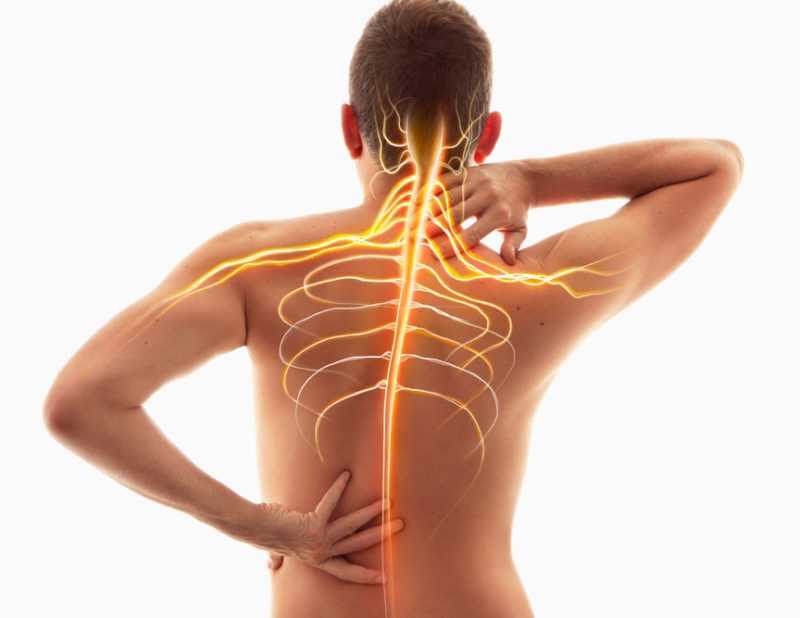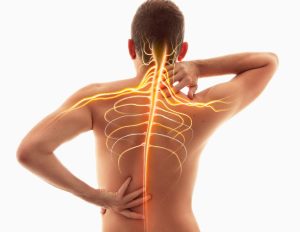Characterizing what human sensory nerves can sense

At a Glance
- Researchers analyzed gene activity in different human sensory nerve cells to predict which would respond to stimuli such as heat, cold, and pressure.
- A better understanding of how these distinct groups of nerve cells work could eventually lead to better treatments for conditions like pain and itch.
The sense of touch lets the body process pain, pleasure, hot, cold, itch, and more. It helps keep the body safe from physical threats and strengthen social bonds. Disorders of touch, which include some types of chronic pain and itch, can devastate quality of life.
Over the last decade, many components involved in helping nerve cells, or neurons, sense touch have been discovered. But how the resulting signals are relayed from the far reaches of the body to the brain, and how the system may go awry, are still being studied. Much research into touch to date has been done in animals such as mice. It hasn’t been clear how similar this process is between these model organisms and people.
Within the human body are nerve cells that can sense different types of stimuli including touch, pain, and temperature. Some of these nerves lead into structures called dorsal root ganglia (DRGs) to transmit the information to the brain.
In a new study, funded in part by NIH, researchers from the University of Pennsylvania, Linköping University, and Karolinska Institute in Sweden developed a set of methods to study neurons in DRGs taken from people. The team collected DRG nerve cells immediately after death from three people who had donated their bodies for research.
They used a technique called laser capture microdissection to cut out the cell bodies of individual DRG neurons from several different locations in the body. This allowed them to sequence the RNA found in individual cells and to look for differences in how genes were activated, or expressed. The results were published on November 4, 2024, in Nature Neuroscience.
Based on gene expression patterns, the researchers sorted the collected DRG nerve cells into 16 distinct types. Some had similar gene expression patterns to those previously measured in mice and monkeys, but other patterns were unique to people. For example, a greater proportion of DRG neurons showed patterns indicative of pain processing. The team also found several promising targets for new treatments in human pain neurons.
The team next used the gene expression patterns to predict which types of sensory stimuli different nerve types might respond to. They identified subsets of neurons that likely respond to specific stimuli, such as heat, cold, or pressure. They then measured the activity of corresponding single neurons in the skin of 62 living volunteers.
They found that gene expression patterns predicted whether neurons responded to these stimuli in real time. But the researchers also found some unexpected results. For example, certain neurons predicted to help process pleasant touch could also sense temperature.
“There’s a common perception that nerve cells are very specific—that one type of nerve cell detects cold, another senses a certain vibration frequency, and a third reacts to pressure, and so on. But we see that it’s a lot more complicated than that,” says Dr. Saad Nagi from Linköping University, one of the study’s co-leaders.
The team plans to continue their work with samples from a larger, more diverse set of donors. They also hope to compare neurons taken from healthy people with those taken from people with chronic pain and other conditions involving touch.
—by Sharon Reynolds
References: Leveraging deep single-soma RNA sequencing to explore the neural basis of human somatosensation. Yu H, Nagi SS, Usoskin D, Hu Y, Kupari J, Bouchatta O, Yan H, Cranfill SL, Gautam M, Su Y, Lu Y, Wymer J, Glanz M, Albrecht P, Song H, Ming GL, Prouty S, Seykora J, Wu H, Ma M, Marshall A, Rice FL, Li M, Olausson H, Ernfors P, Luo W. Nat Neurosci. 2024 Nov 4. doi: 10.1038/s41593-024-01794-1. Online ahead of print. PMID: 39496796.
Funding: NIH’s Helping to End Addiction Long-term® (HEAL) Initiative, National Institute of Neurological Disorders and Stroke (NINDS), National Eye Institute (NEI), and National Institute of Arthritis and Musculoskeletal and Skin Diseases (NIAMS); Swedish Research Council; Knut and Alice Wallenberg Foundation; European Research Council; Swedish Medical Society.








